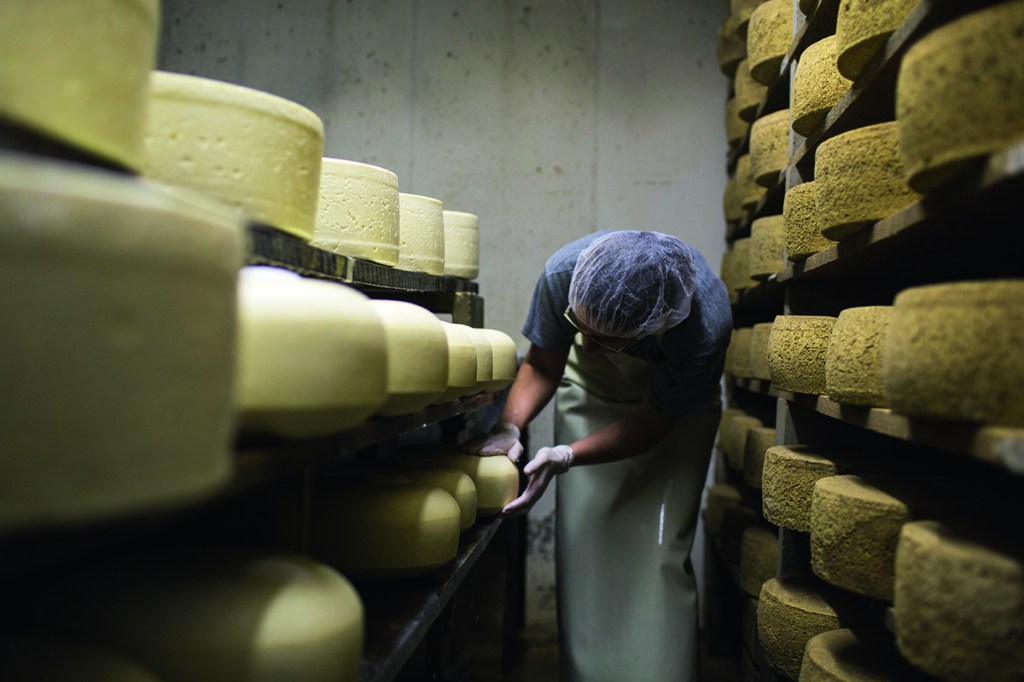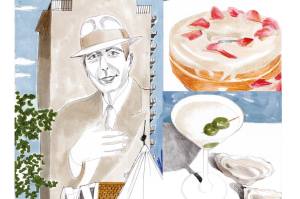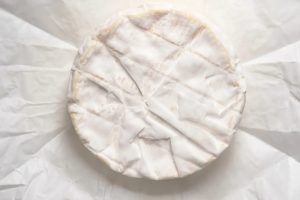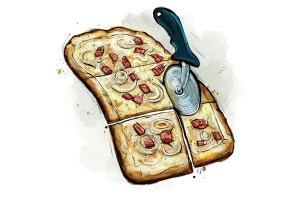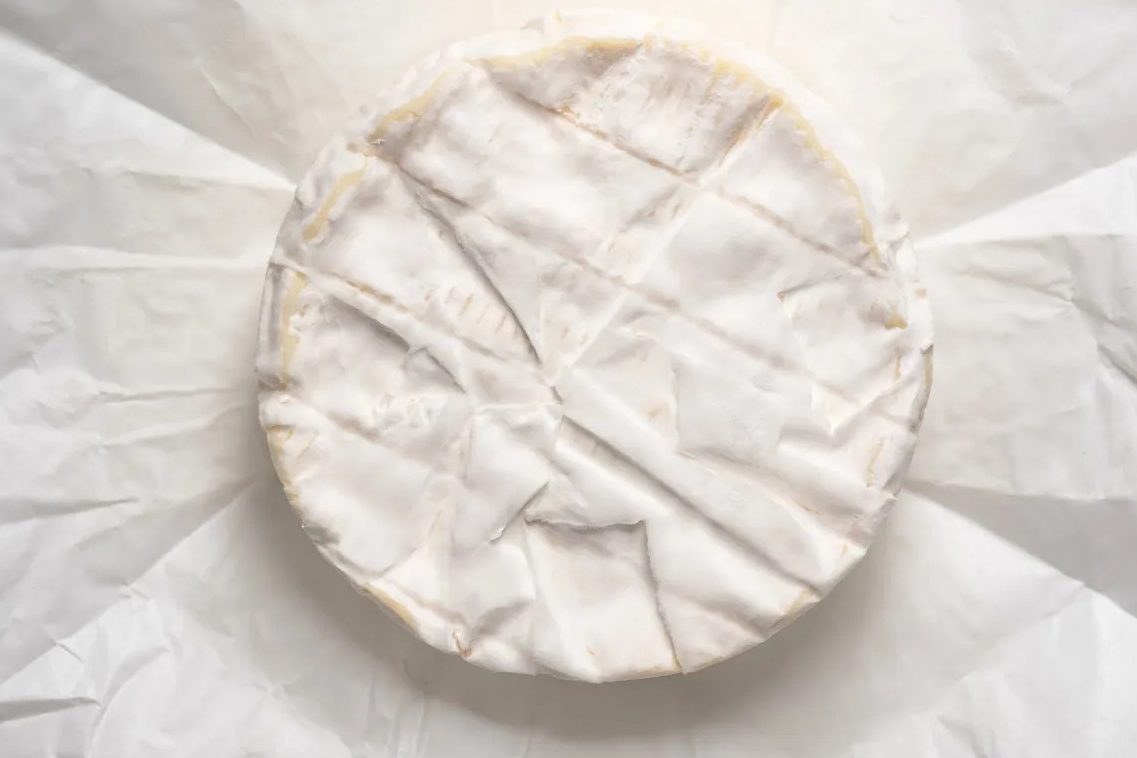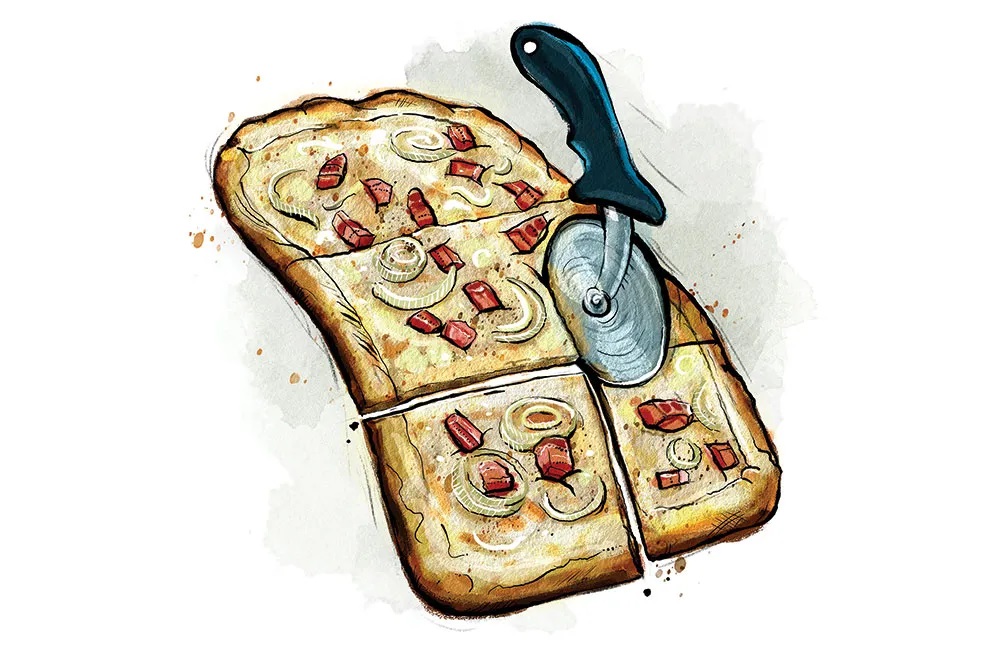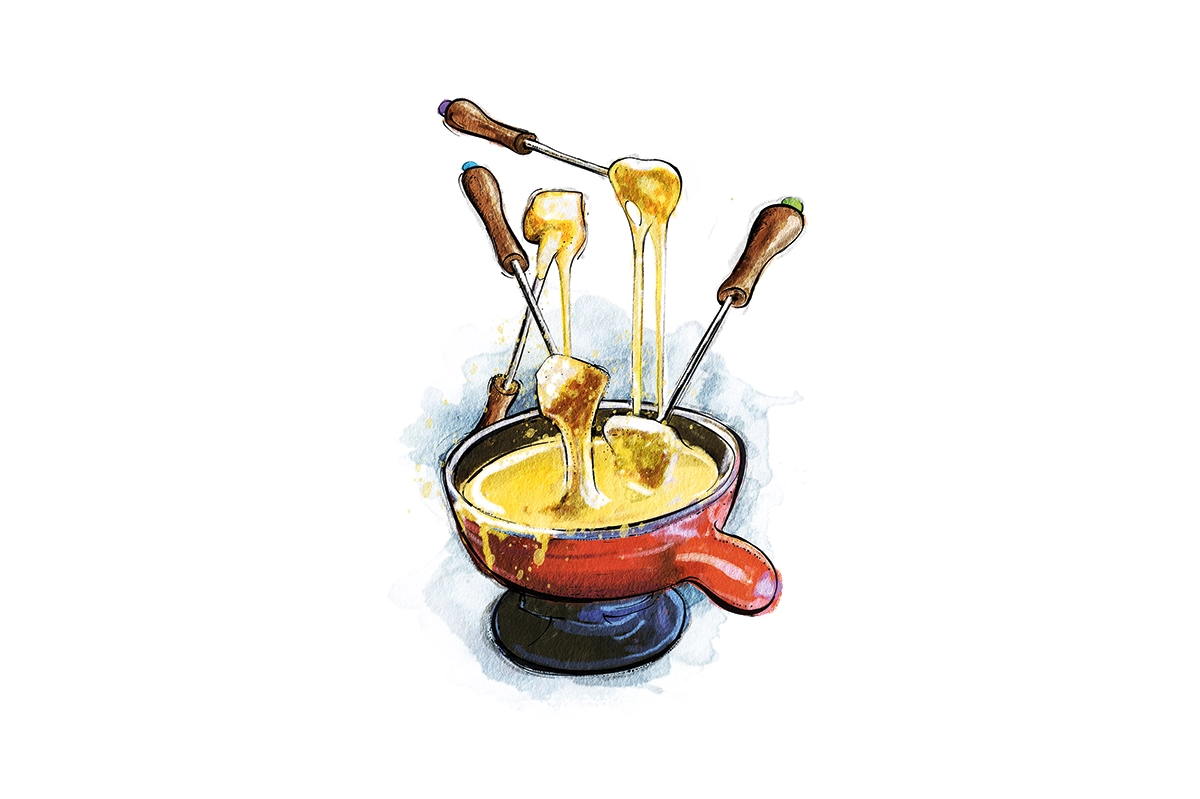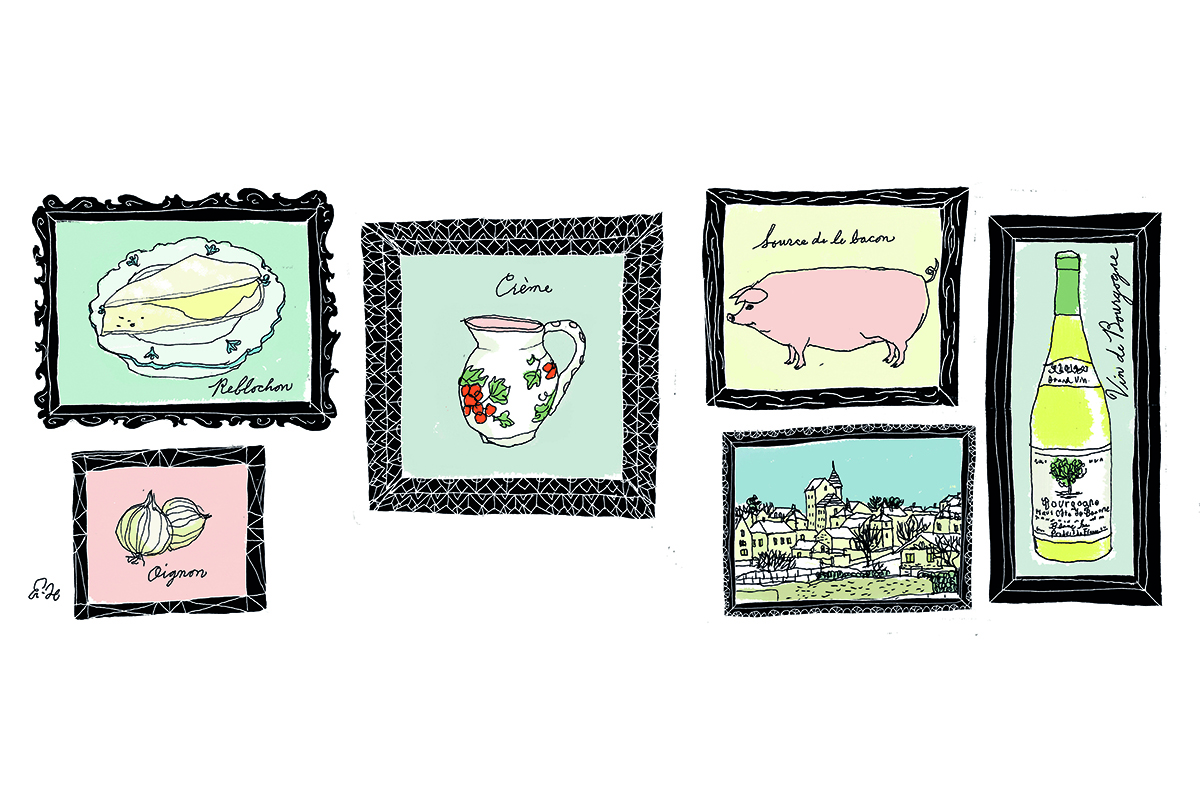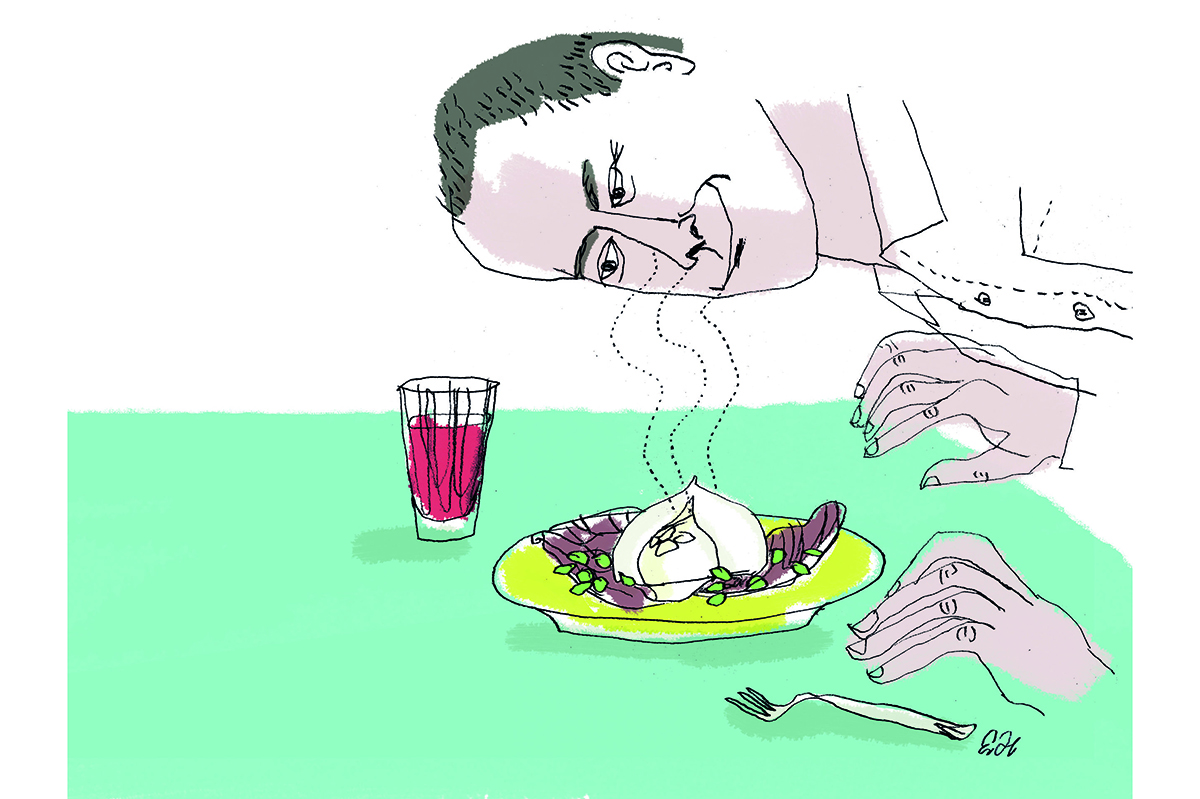This article is in The Spectator’s March 2020 US edition. Subscribe here.
‘What do ties matter, Jeeves, at a time like this?’ Bertie Wooster was once heard to groan. Does cheese matter in a time of coronavirus, climate panic and tariff wars? These pressures can lead anyone to succumb temporarily to Sartresque nausea. Fortunately the gentleman’s gentleman was at hand with a steadying dose of sanity: ‘There is no time, sir, at which ties do not matter.’
And there is no time at which cheese does not matter. Cheese, with its long and glorious history, its capacity for soaring to the summit of refinement and sounding the bass-string of humility, its microbiological and gastronomical complexity, its connection to specific geographical locations, and its inextricability from culture and tradition, is a microcosm of civilization. And civilization always matters.
The Pilgrim Fathers, who took the precaution of packing a cow onto one of the first ships to follow the Mayflower, made cheese according to English recipes — essentially variations on cheddar. But Quebecers claim to have invented the first specifically North American cheese in 1635 on the Île d’Orléans. It was poetically named Le Paillasson, the Doormat, owing to the reed mat on which it rested while drying above the woodstove. The reeds, gathered from a shoreline washed by salty water at high tide, lent it an inimitable flavor.
The Pilgrims’ independence-loving descendants adopted cheese as a medium of exuberant self-expression. President Thomas Jefferson was presented with a wheel of the stuff, alleged to weigh in at 1,600lbs, with his motto impressed upon the rind: ‘Rebellion to tyrants is obedience to God.’ A similarly gigantic cheese was given to President Jackson, who, perhaps intimidated by the monster, assigned it a room in the White House where it resided, untouched, until his term was up. Mercifully for the incoming administration, Jackson threw a final cheese-tasting party at which the behemoth was demolished by Washingtonians armed with knives.
Some of this joie de vivre was lost with mass production, wartime rationing and the need to send vast shipments of cheddar to troops overseas. Milk collected in quantity had to be pasteurized — killing the bouquet of the flavor-enhancing micro-organisms that were unique to each individual farm. Many artisan cheesemakers stopped producing (although Quebec’s cheesewrights took new heart from the arrival of French Trappists who settled in Oka and laid the foundations for la belle province’s flourishing cheese industry today). Blandness and uniformity conspired against North American cheese. With the advent of Kraft Singles, it looked like they’d won.
Uncle Sam, though temporarily stunned, wasn’t down for the count. Artisan cheesemakers began popping up in the Seventies; today the American Cheese Society reports nearly a thousand of them. If the Land of the Free ever suffered from an inferiority complex about its cheese products, it need blush no longer. At the 2019 World Cheese Awards in Bergamo, Italy, an Oregon cheese, Rogue River Blue, creamed 3,803 other cheeses and won first place.
In the absence of an established fine cheese tradition, young cheesemakers such as François Nadeau, founder of Fromagerie Kapuskoise in northern Ontario, have been traveling to France to learn the Gallic mysteries of the art. Nadeau went to Haute-Savoie, where he learned to make cheeses such as Morbier, recognizable by its distinctive center line of ash; the low-fat but luxurious Tomme de Savoie; and Ossau-Iraty, a Basque cheese made from sheep’s milk. These cheeses served as inspiration for Nadeau’s delicious Canadian creations, named after lakes and rivers in his Northern Ontario region: Kénogami, Saganash, Pagwa (a soft goat’s cheese), Opasatika (a washed-rind cheese that works well for tartiflette) and many more.
North Americans face different pasteurization rules than Europeans. Unpasteurized cheese can’t legally be sold here unless it has aged for more than 60 days. But affineurs say many raw-milk cheeses peak much sooner. Pasteurization also neutralizes the aromatic subtleties of milk from cows who forage among the local flora or spend their summers munching on rich Alpine grasses. In Quebec, ever the exception to the rule, provincial authorities have cheesed off the federal government by dropping pasteurization requirements altogether.
To the aficionado, pasteurized and raw cheeses are as different as chalk and, er, cheddar. I was once lucky enough to taste one of the most sought-after contraband French cheeses — the unpasteurized Mont d’Or, a runny, spruce-wrapped, weeks-old, barnyardy mountain delight available only in wintertime. It sings. You sing. Everything sings.
To raw-milk enthusiasts, the concept of terroir — the natural environment of production — is as crucial to cheese as to wine, not just because of the biological content of the milk, but because the cultures introduced for fermentation and ripening can often be derived from the immediate local environment. The Penicillium mold used in Roquefort, for example, occurs naturally in the limestone caves of Roquefort-sur-Soulzon.
The statistician and economist E.F. Schumacher once proposed that we measure the success of a country’s agricultural activity by whether it keeps the nation in touch with ‘living nature’. Does this cheese humanize and ennoble our ‘wider habitat’? Is it one of the foodstuffs necessary for a ‘becoming life’?
Artisan cheese does rather well by these standards. The best cheese results from a healthy relationship with nature, since the best cheese comes from the best milk, obtained from contented cows leading cushy lives in prime pasturage. Surely it is no coincidence that countries with the oldest cheese traditions — looking at you, France — enjoy some of the most humanized and ennobled landscapes in the world. And as for foodstuffs proper to a ‘becoming life’, what is France but the Land of the Brie?
This article is in The Spectator’s March 2020 US edition. Subscribe here.



